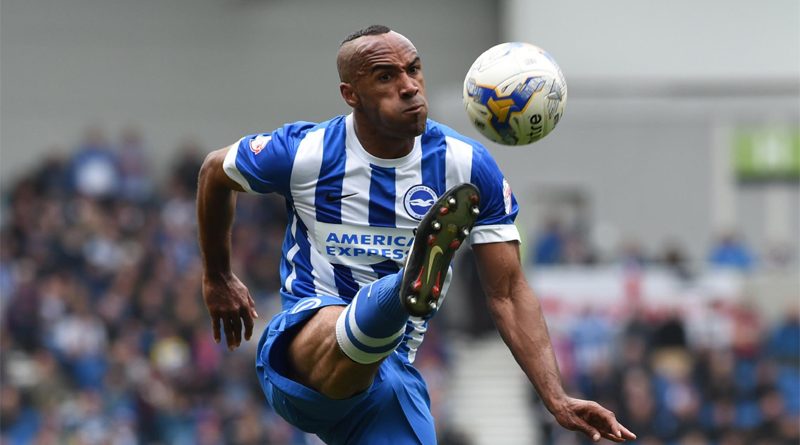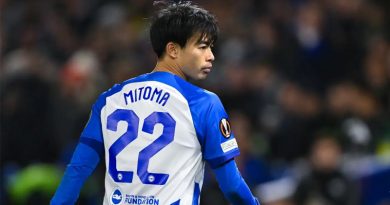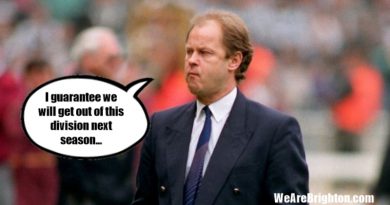Lessons for Brighton from the summer of 2014
Despite what a scroll through Twitter might tell you, there is a very good reason to be confident that Brighton will not flog all the family silver in one go this summer – because of what happened in 2014.
Cast your mind back eight years. Ella Henderson’s Ghost was all over the airwaves. The government of David Cameron legalised gay marriage.
Germany won the World Cup in Brazil where England bowed out in the group stage, failing to win a single game at the tournament.
In Good Old Sussex by the Sea, Oscar Garcia had just produced a miracle in leading a squad of players that were mid table at best into the Championship playoffs. And then he resigned, quite possibly because he had seen the budget for the 2014-15 campaign.
This is what Gus Poyet He Who Must Not Be Named was referring to when he talked about glass ceilings. Oscar was far too diplomatic for the sort of public meltdown that Poyet had shown a year earlier, of course.
But it was clear that Brighton thought they could try and win promotion to the Premier League on the cheap and it had seemingly irked two managers.
Oscar’s replacement was Sami Hyypia. He gets a lot of stick for what happened in the 2014-15 season. Yes, he was a dreadful appointment whose fascination with defenders who could not defend and strikers who could not score was interesting to say the least.
He was not helped though by the squad given to him by the club and its head of recruitment, David Burke.
Departing Brighton in the summer of 2014 were Leonardo Ulloa, Will Buckley, Matthew Upson, Stephen Ward, Tomasz Kuszczak, David Lopez, Andrea Orlandi and Keith Andrews.
Ulloa was the headline sale, departing for a then-club record £8 million to Leicester City. Buckley was flogged to Sunderland and although the Albion did not receive fees for any of the others, almost all of their departures were money based.
Some were on big wages. Others were loans Brighton did not want to pay to make permanent. Ward was a classic of the genre, the Albion spending the entire summer haggling with Wolves over a few quid, only to then be surprised when Burnley came in late in the transfer window to whisk him away to Turf Moor.
Had Brighton paid the £1.5 million Wolves wanted for Ward at any point in May, June or July rather than trying to get an already good fee down further, they would have secured one of the best left backs in the Championship.
Six months earlier, two-time Brighton Player of the Season winner Liam Bridcutt and Ashley Barnes had been sold in the January transfer window.
Barnes’ replacement was Spanish striker David Rodriguez (take 10 points if you remember anything about him), a sign of what was to come in the summer when Brighton brought in all manner of weird and wonderful budget players.
Future Premier League champion Ulloa was replaced by Chris O’Grady. Adrian Colunga joined O’Grady in the forward line as the second Barnes replacement, once the Albion realised Rodriguez was crap.
Sam Baldock came in for Buckley and although he would go onto play a big part in helping Brighton to the top flight a few years later, his first season at the Amex yielded a grand total of three league goals.
Taking over from Upson was Aaron Hughes, in between collecting his pension from the post office. When Brighton realised that playing a 64-year-old centre back in the Championship was not the best idea, Greg Halford arrived on loan.
Andrews, Orlandi and Lopez in midfield gave way to Danny Holla, Gary Gardner and Paddy McCourt. It feels blasphemous to include the Derry Pele amongst those names as he was one of the few enjoyable aspects of the first half of the 2014-15 season. Although maybe that was actually a sign of how bad things were?
Kuszczak was replaced with David Stockdale, who in that first season was awful. It took Stockdale until the September trip to Brentford seven games into the campaign to make his first save.
There were frequent calls throughout the 2014-15 for him to be replaced by teenager Christian Walton, even though throwing a rookie goalkeeper into a relegation battle would have been a massive risk.
Stockdale’s subsequent transformation into one of the best goalkeepers in the Championship between 2015 and 2017 was remarkable. No coincidence it happened once Ben Roberts was appointed goalkeeper coach.
Joe Bennett at left back was decent enough but still not a patch on Ward. Likewise Joao Teixeira offered some excitement as a number 10 despite the absolute shit show going on around him.
At one point in the 2014-15 season, Brighton had so many loaned players that they could not name them all without breaking the rule that said only five were allowed in a matchday squad.
It was this scenario that led to Walton making his Championship debut in place of the injured Stockdale when Hyypia had to omit Ali al-Habsi so that five borrowed outfield players could feaute for Brighton & Loan Albion.
What best sums up the Seagulls 2014-15 squad is that things did not get much better once the club finally accepted Hyypia’s resignation after he offered it for a second time.
Even the great Chris Hughton struggled, Brighton limping to safety because Blackpool, Millwall and Wigan Athletic were somehow even worse.
The campaign ended with a winless run of seven matches. In the final nine games from mid-March onwards, the Albion scored only two goals.
And one of those was an own goal, Matt Kilgallon doing the honours in the last win of the campaign secured at Blackburn Rovers on Saturday 21st March.
The Albion had been taught a very important lesson in 2014-15 – you cannot get rid of so many of your best players in a single transfer window and expect to succeed. Especially if you then try and replace them with cheaper, inferior options.
A change of approach saw Hughton well backed for the 2015-16 season. Uwe Hunemeier, Gaetan Bong, Liam Rosenior and Connor Goldson improved the defence markedly.
Jamie Murphy and later Anthony Knockaert and Jiri Skalak transformed the Albion’s threat out wide. Tomer Hemed brought goals and Bobby Zamora was a popular returnee whose experience and knack of scoring when it mattered most made him a valuable member of the squad.
Within two seasons, Brighton had gone from being on the verge of relegation to League One to winning promotion to the Premier League.
Since the summer of 2014 when the Albion willingly allowed the spine of their team to depart, Brighton have sold only two first choice players – Ben White and Yves Bissouma.
In that time, Lewis Dunk and Dale Stephens are the most famous examples of players who have handed in unsuccessful transfer requests to try and force through moves.
Dunk even refused to play in a League Cup tie away at Southend United in 2015 out of desperation to join Fulham, being fined two weeks wages as a result. Still the Albion would not sell him to the Cottagers for £5 million.
A host of others have been coveted by bigger clubs, none of whom have been sold by Brighton. Whereas financial considerations and a positive difference to the balance sheet trumped everything during 2014, in 2022 the Albion are much more considerate of the consequences of making a quick buck through player sales.
The message is clear – Tony Bloom will only sell when the deal is too good for Brighton to turn down. The summer of 2014 followed by the Albion coming perilously close to slipping into the third tier has informed everything Brighton have done in terms of player departures ever since.
And it is why Seagulls fans should be confident that not all the family silver will be going this summer – despite what all those journalists, agents and in the know accounts on Twitter might tell you.
Brighton will never be selling an Ulloa and replacing him with an O’Grady again.




